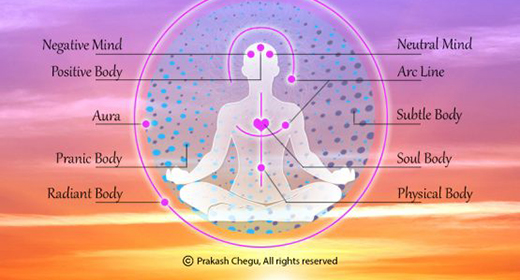“The human-animal bond bypasses the intellect and goes straight to the heart and emotions and nurtures us in ways that nothing else can.” – Karin Winegar.

An amazing 95% of us see our dogs like family, and it’s not hard to see why that is the case. For thousands of years, we have lived side by side with them, and they have become an integral part of life for so many of us.
Similarly, a good number of people suffer from mental health issues, and it can be hard to go through it alone – hence we have dogs in our lives. As someone who suffers from crippling anxiety that affects my everyday life (amongst other mental health stuff), the comforting presence of my dog throughout each day has been a constant I never truly knew I needed until he appeared in my life.
It’s because of him that I am able to get out of bed every morning and face the day – because he needs me to do these things for him in order to live a happy life, and my husband works odd hours so I am the only one who can do it.
With him, I have comfort at all times, and the knowledge that he is only ever a stretch of my arm away if I need to pet him. The thing is, dogs can be the greatest boon to our mental state, and in many ways, they allow us to live a life that is a little more normal and structured than it would be without them.
There are so many ways that they can benefit your life, each of which can give your mental health the boost it needs. In this guide, we take you through the amazing ways in which dogs can help us in their own amazing way.

Can Dogs Improve Your Health?
It is often wondered if dogs can really improve our health, and while there are many studies still ongoing, there are also plenty that have provided us with clear results. Before we move onto how dogs can help specific mental illnesses, here is a general look at the ways in which they can help to improve our health.
Lower Blood Pressure
There have been many studies – with the earliest dating back to the 1980s – to show that owning a dog (or other pet) is linked to having lower blood pressure when compared to those who do not own any animals.
Similarly, a study was also conducted on married couples in 2002 that showed couples who owned a dog (or other pet) also displayed lower blood pressure levels than couples who had no pets. Other studies have also shown that heart attack survivors are eight times more likely to live another year if they own pets, showing what a great boost they can provide our health.
Fewer Allergies for Kids
It has been shown that infants who are raised with dogs are far less likely to develop allergies and wheezing by the time they were three when compared to infants who were not raised with animals. This is because the early constant exposure can help to build up a form of immunity to things like pet dander – which is great news for the whole family.
Can Help to Boost Overall Wellness
Dogs have such a positive effect on our moods, and this can have an equally good effect on your overall health as well. Those who own animals often suffer less from common ailments than those without, and they can also provide the positive boost we need when faced with more serious illnesses like cancer.
Patients who receive visits from dogs (their own or otherwise) often feel more positive after the interaction. While a positive mental attitude is certainly not a cure, it has been shown to have an effect on recovery and wellness.

How Dogs Help Lifestyle Changes
Dogs are also able to help us with lifestyle changes, something else that can positively impact mental health (something we look at further in the next section). Here are some of the ways in which dogs can change the way we live.
Exercise
Owning a dog means walking a dog, and studies have found that 60% of those who walk their dogs regularly are meeting daily exercise quotas to maintain a fit and healthy lifestyle. This is good news for both your mental and physical health, as exercise not only boosts your mood (and sense of accomplishment), but also ensures that your body is kept in good shape.
Those who walk their dogs well also show higher levels of activity outside of walking the dog, often taking extra steps to squeeze a little more into their day. They also encourage you to do more than you might have without a dog, which is good news in a world that is growing ever larger in terms of waistlines.
Socialisation
Many people who are depressed are incredibly lonely, and mental health issues, in general, can leave you feeling incredibly isolated. Dog walking usually means that you meet others who are walking their dogs, which results in a casual hello or even a quick chat.
Over time, you often see the same people regularly and will build a level of small talk between you when you meet. Whether you just want to say hello or build an actual friendship, dog walking allows for all levels of friendly interaction between you – something we all need.
Giving You Routine
Having a dog means that there are certain duties you must fulfil each day, including feeding and walking. While it can be hard to take care of yourself when you are low, owning a dog means that you can get some form of routine implemented in your life – forming a pattern in your day and giving you a sense of purpose. Routine can help make life easier and completely change the way you live.

Mental Health Statistics
Before we move onto how dogs can help with mental health, here are some interesting statistics for you to look at, displaying how many people (roughly) in the USA and UK suffer from mental health issues.
|
Mental Health Problem |
UK Statistics |
USA Statistics |
|---|---|---|
|
Generalised Anxiety Disorder |
5.9/100 people |
3.1% |
|
Depression |
3.3/100 people |
8.3% |
|
Phobias |
2.4/100 people |
8.7% |
|
Obsessive Compulsive Disorder |
1.3/100 people |
1% |
|
Panic Disorder |
0.6/100 people |
2.7% |
|
Post-Traumatic Stress Disorder |
4.4/100 people |
3.5% |
|
Psychotic Disorder |
0.7/100 people |
>1% |
|
Bipolar Disorder |
2.0/100 people |
2.6% |
|
Antisocial Personality Disorder |
3.3/100 people |
4% |
|
Borderline Personality Disorder |
2.4/100 people |
1.6% |
|
Mixed Anxiety and Depression |
7.8/100 people |
6.7% |
|
Suicidal Thoughts |
20.6/100 people |
4% |
|
Suicide Attempts |
6.7/100 people |
0.5% |
|
Self-Harm |
7.3/100 people |
4% (adult) 15% (teen) |
Never feel as though you are alone if you are struggling with your mental health. There are people you can call for help, and you can find the key ones below:
UK: Samaritans (24/7) 116 123
USA: Suicide Prevention Lifeline (24/7) 1-800-273-TALK (8255)

How Dogs Can Help Mental Health
“Most of all, when your confidence is at its lowest, when you feel battered – by life, death and (especially) other humans – a dog will shove her nose in your hand and tell you, with conviction and feeling, what a really good person you are.” – Julie Myerson
Sometimes, the ways in which a dog can help your mental health is the same for one condition as it is the other, and other times they vary. Regardless, it is never nice to have to read through blocks of text, anxiously searching for your condition to see what kind of advice is there. In this section, we have gathered information for a number of mental illnesses to show how dogs can help you out.
Anxiety (Generalised Anxiety Disorder)
This is often classed as a feeling of unease or fear that can vary between mild and severe. It manifests itself differently for everyone, often resulting in an increased heart rate and feelings of despair. Just hugging your dog causes the body to flood with oxytocin, the hormone that lowers blood pressure, heart rate, and stress levels.
The same goes for stroking them, as this also releases the calming hormone throughout your body to help you feel calmer and more relaxed. They also get you outside for a walk, and gentle exercise combined with fresh air can really help to alleviate feelings of anxiety, something multiple studies have proven, especially as it helps to lower your blood pressure and take your mind off things.
When you are in the middle of a severe anxiety attack, they know what is happening, and the comforting touch of their body against yours can help to calm your heart rate and mind incredibly fast. They create a distraction, but also give you validation as a person and a sense of worth. This creature needs you as much as you need it, providing you with acceptance and purpose.
Social Anxiety
This is commonly described as a pervasive disorder that can affect almost every aspect of a person’s life. In many ways, it can be seen as a fear of being judged and negatively evaluated by others, and there is a fear of social interactions with other people. There are a few ways that dogs can help those who are struggling with social anxiety.
Of course, they have a very soothing presence, one where many of our fears and thoughts melt away as we give them the attention that they both crave and deserve. However, when it comes to social situations, they are also able to act as a way to break the ice and get involved in a conversation with another person.
You see, when you meet people with your dog they are unlikely to ask much (if anything) about you – they are more interested in your dog. The questions and casual conversation are the perfect way to start building your confidence, but the other person is often so focussed on the dog that they won’t notice if you have a little trouble with your words. They are social magnets that ease you into things.
Depression
There are many different levels of depression, but it tends to be classified as persistent feelings of sadness, hopelessness, and a lack of energy or interest for the things that you used to enjoy. It’s something that affects many of us, and can often couple itself with anxiety. There are many ways that dogs can help get you out of your depressive rut.
One of the hardest things to do when you are depressed is get up every morning. Dogs force you into a structured routine that means you need to get up so that they can be fed, watered, let outside, and walked. A structured day means that you are able to give meaning to your time, providing you with a sense of purpose when it comes to your existence.
The fact that you are able to successfully care for them also adds to feelings of self-worth and validation, increasing your confidence and sense of achievement. They also get you outside to exercise and socialise, two things that boost the serotonin being produced by your body, increasing your overall feelings of happiness and worthiness.
Depression often comes coupled with loneliness and anxiety, so it is essential to get out every day with your dog. They offer you unconditional love no matter how low you feel, and a simple lick on the hand or face can bring on a smile that you didn’t even know you could muster. Even petting them can increase your sense of joy, helping you to start (and continue) your recovery.
BPD (Borderline Personality Disorder)
This is also known as Emotionally Unstable Personality Disorder (EUPD), and its symptoms can be placed into four main categories: emotional instability, disturbed patterns of thinking or perception, impulsive behaviour, and intense but unstable relationships with others.
It is common for those with BPD to suffer from an intense fear of abandonment, which can lead to the intense relationships with others. Dogs will never purposefully abandon you, and their unconditional devotion to their owners is something that many people with BPD find incredibly comforting in their daily lives, something that can also reduce feelings of depression.
Their soothing natures can help to alleviate stress and calm periods of instability when it comes to moods – reducing the number of angry or upset episodes that they suffer from. They don’t judge like people do either, leaving a feeling of acceptance and validation in place of worthlessness and fear. You can open up to dogs as well, and they make for the perfect confidant when you are suffering.
Bipolar Disorder
This was formerly known as manic depression, and it is a disorder that tends to cause dramatic swings between intense periods of depression and abnormally high levels of joy – known as mania or hypomania, depending on its severity. It can sometimes be confused with BPD, but the two disorders are actually very different.
Like many mental health issues, bipolar disorder can leave you feeling very lonely, but it also has many similarities with depression when the low mood phase is entered. It can leave you feeling empty and hopeless, but your dog will ensure that you get outside to exercise and take in some vitamin D – which can actually be very effective at combating low moods.
It is also common for sufferers to experience hallucinations during both high and low periods, which can be frightening to experience. A dog acts as a comfort during these times, helping your brain to produce calming oxytocin, but also giving you the reassurance that everything is going to be alright. The security they bring also reduces feelings of fear and anxiety, making you more comfortable.
Stress
This is something that can affect us all, and sometimes on a chronic level. It’s a psychological pain that leaves you feeling strain and pressure on a mental level. We all have a little stress, but for some, it is more severe and constant than others.
Dogs provide a sensory comfort, simply touching them and stroking their fur reduces the level of cortisol (the stress hormone) in your blood, and instead releases oxytocin to help you feel calmer and more relaxed. It also lowers your heart rate and blood pressure so that you can think clearer and start feeling better about yourself. Put simply, they are just incredibly relaxing to be around.
Going for a walk with your dog can also reduce the amount of stress you are feeling, both due to the physical activity and fresh air, as well as giving you a distraction from the things that are causing you stress. It’s a good way to clear your head so that you can return to the problem later with a fresh and rested perspective.
As an interesting side note, studies have shown that when they are being petted, stress levels in dogs are also reduced. So, when you are trying to stay calm by petting your dog, you are actually doing them a massive favour as well – it’s a method that works both ways.
OCD (Obsessive Compulsive Disorder)
You see it a lot where people will claim they are “a little OCD”, but it is actually a serious condition that often causes a person to have obsessive, and often invasive, thoughts against their will, as well as a set of routines (rituals) that they need to complete in order to feel calm and as though they can continue on with their day. Of course, there are variations, but these are the most common.
OCD can cause panic, anxiety, and unpleasant thoughts that you cannot get out of your head, and many people subconsciously resort to picking their bodies or fiddling as a way to cope. Having a dog to stroke not only provides a great solution to unintentionally hurting yourself, but also releases oxytocin in your body to bring you a sense of calm and order when the world feels like chaos.
They don’t judge you for your rituals either, allowing them to become a part of your routine, and one that doesn’t mind doing so. They provide someone to confide in, as well as the ideal distraction from any obsessive thoughts or feelings that you are trying to fight. In many ways, there are there to help you fight the battle and provide you with the unconditional love and affection you need.
PTSD (Post Traumatic Stress Disorder)
This is an anxiety disorder that is caused by very stressful, disturbing, or frightening events – most commonly from childhood trauma or witnessing war (such as soldiers or civilians caught in the crossfire). They often relive the traumatic events through nightmares and flashbacks, and often have triggers that can cause them to occur in seemingly normal situations.
Dogs can help those who are suffering get through the toughest time, especially as treatment and therapy can be very hard in the early stages. Dogs are vigilant creatures that will let you know if something is wrong, allowing you to be able to tell if you just had a nightmare or if something is actually happening, and their protection can lead to you feeling more secure in your environment.
They offer unconditional love and support, sensing when you need them to comfort you, ensuring that they are always there for you to hug and pet – releasing a calming dose of oxytocin in your body so that you can try to relax. Additionally, they can help you to relearn trust in people through the trust that they give you (and you them), as well as remember deep feelings of love and affection.
The road to recovery is not an easy one, and you may never get over your PTSD, but with the love and companionship of a dog, the world will feel like a less lonely and isolated place to be – regardless of the form of PTSD that you are suffering from.
ADHD (Attention Deficit Hyperactivity Disorder)
This is often defined as a group of behavioural symptoms that include (but are not limited to): inattentiveness, hyperactivity, and impulsiveness. Usually, it is spotted at a young age, but it is still possible to be diagnosed as an adult. It can be hard to concentrate on this, even when you reach maturity, and you might be surprised how much dogs can help adults with ADHD.
They give you a sense of consistency and routine in your life, allowing for structure to be added to your day. It means that you have to plan ahead, which can help with issues surrounding organisation as well as make it easier to achieve and plan any goals that you want to achieve. Having a dog can even help you improve things like consistency – like making a plan and sticking to it.
As dogs need to be walked every day, they provide you with the perfect chance to burn off excess energy (for both of you) and get yourself focused for the day. You see, exercise increases the flow of oxygen to the brain which can lead to better concentration levels throughout the day. This is ideal for those who really find it hard to focus on work or studies.
Dogs are always happy to see you and offer a level of love that no one else can. It is often difficult to cope with the outside world and judgement of others, but a dog will always love you for who you are. This can boost your confidence, self-worth, and even help you to become a stronger person – as well as one who is less bothered by the opinions of others.
Autism and Asperger’s
Autism and Asperger’s are essentially the same, but also different. They are both part of the autism spectrum, but every person on it is different, and there are so many different levels to it. Put simply, autism as defined as a developmental issue that affects the way people perceive the world around them and interact with others. Some have difficulty processing information, whereas others appear to function as regular people in everyday life.
Like many people with autism, dogs live in a world that is based around the senses. They understand sensitivity to things like sound, and they also use patterns to sniff things out and track. Additionally, touch is important to them as many dogs like to be close. They relate, and that can be so important to an autistic person as you often feel very isolated from the rest of society.
Anxiety and depression are common feelings among people with autism, and having a dog around means that you have someone to confide in, but also to hug and pet when you are feeling low. These simple activities help to boost your levels of oxytocin and serotonin, leaving you with an overall feeling of calm and pleasure when you are embracing your furry friend.
Autism often contains routines and structures to make life an easier thing for a person to get through. Dogs also love routines, and this can be a great comfort. They follow the rules and can be trained easily, making them both a reliable and rewarding companion for anyone with autism to have.
Some people have meltdowns, which is when everything becomes too much (whether triggered by sensory overload, stress, or something else), and it can result in yelling, hitting themselves, as well as a general feeling of distress. Many service dogs (or even your own dog) are trained to deal with these – offering a comforting paw or licks to help calm their owner down; a method that works well.

How Dogs Can Help Older People
Older people suffer from mental health issues as well, although the most common one is depression, which is often caused by severe loneliness. While the above (and below) issues can affect anyone, here are some of the ways that dogs can help older people in particular.
Loneliness and Depression
Many studies have found that people who have dogs are less lonely, and for the ageing population, loneliness is often the biggest contributor to mental health – and leads to depression. They help you to rediscover meaning in your life, especially if your children have left home and you aren’t sure where to go from there.
The fact that you get to care for them and love them often causes your sense of self-worth to increase or return, bringing optimism and a boosted mood along with it – as well as increased morale. It is fulfilling as well, looking after a creature that is dependent on you, but can also offer so much in return.
They help you to stay connected with the outside world when they go for a walk or to the vet, but they in themselves provide you with companionship. Getting older can be hard as you lose touch with friends or they pass away, and a dog can be the most essential lifeline that there is. It’s not always easy to maintain your social life as you get older, and a dog is a perfect way to fill it.
Those who have a dog often feel more obligated and encouraged to care for themselves, as they depend on you for everything. It’s the boost you need to look after your own health and try to pull yourself out of your depressive state – something that is more possible than you might think when combined with the above statements.
Dementia and Alzheimer’s
There are a variety of behavioural issues displayed by those who suffer from dementia and Alzheimer’s, many of which are actually caused by an inability to deal with stress of any kind. Researchers have found that those who have dementia or Alzheimer’s and have a therapy dog in the care home suffer from less stress and have fewer anxious outbursts than those who do not.
They help to soothe patients, reducing aggression and outbursts. However, much of this stress in patients is caused by the stress the primary caregiver is suffering from as well – something else that dogs are able to help with. They can reduce the stress that both parties are suffering from, creating a more relaxed and calmer environment for everyone.
Just because they communicate nonverbally does not mean that it is not a positive interaction or experience either. Even the playful touch of their nose on a patient’s hand has been shown to massively reduce stress and soothe all feelings of anxiety. Petting them is incredibly therapeutic, just as it is for many mental health conditions.

How Dogs Can Help Children
Kids and dogs are often the best friends there are, and if your child is struggling with their mental health, dogs can be the ideal (and most effective) way of helping them cope. Much like with adults, there is something about the bond between them that is different than it is for two humans. Dogs can help children, and here are some of the ways.
Introducing Kids and Dogs
If you do not have a dog already, it is important to understand how to introduce your new family member to your children – especially if you have toddlers. You must teach your kids how to behave correctly around dogs.
This includes where to pet them and how gently to do so, not to wake them when they are sleeping, and also to understand that they feel pain and when to leave them alone. While older children are likely to pick this up relatively quickly, toddlers do not understand the concept of pain when it comes to other living creatures, and so you may need longer to teach them the right way to behave around animals.
As for your dog, ensure that all interactions when around the children are positive ones so that they grow to understand how to behave around the children, and teach them to remain calm and gentle when the kids are in the same room. Using treats and positive reinforcement (as well as commands like “sit” and “stay”) it won’t take much time at all for them to understand.
Improving Social Skills
When children start interacting with a dog, it helps them to build the foundations for communicating with other people as they begin to learn about emotional attachments and friendship. In fact, studies have shown that children who grow up with dogs often have better social skills than those who do not. Dogs teach them respect, how to share, and also how to behave kindly and with empathy.
Emotional Support
Unlike parents, teachers, and other figures in the life of a child, dogs are not critical and don’t give them orders to follow. They are an equal in the household, and they do not judge your actions – something that many children crave. They also act as a confidant, someone a child can tell everything when they feel like no one else will listen or understand.
Having a dog that is always around can also help to decrease separation anxiety in children when their mother and father are not around. The love and companionship they offer can also build a positive self-image and give confidence. It gives them someone to play with, stimulating the imagination, as well as bringing an immense form of joy when they successfully teach them a trick.
Helping Kids with ADHD
Often, children with ADHD have incredibly high energy levels that can lead to bouts of aggression because everything, including increased stress levels, is so pent up inside them like a coiled spring. Combined with difficulty concentrating and potential ridicule from classmates, it can be a difficult thing for a child to cope with.
Dogs have been shown to incite calm in many children with hyperactivity conditions, including ADHD. Gentle interactions, and the general presence of the dog, are engaging for a child, producing both a physical and emotional comfort. Playing together can also increase the bond, as well as help to reduce energy levels for both parties.
If a child with ADHD walks their dog in the morning, or spends time outside playing with them, it increases the flow of oxygen through the blood and to the brain – helping to improve concentration levels throughout the day. The interaction also helps to reduce stress, helping them to feel more relaxed over the course of the day.
Dogs can help them to build new social skills as well, both through positive interactions with their pets and using them as an icebreaker when a friend comes over to play. Both children will be engaged with the dog, giving them something to bone over. The routine and care that a dog requires can also help children to learn how to plan ahead, an essential life skill for when they become adults.
“Many children with autism can’t relate to a human, but they can relate to a dog.” – Pris Taylor, Autism Service Dogs of America
Helping Kids with Autism
Regardless of where a child is on the spectrum, dogs can be a great help to them. There are some autism service dogs that are trained to sense and diffuse a meltdown, offering comfort and a sense of calm so that the child does not feel overwhelmed and can calm themselves faster.
Many autistic children are able to concentrate for longer periods of time just by having a dog in the room, and the fact that the dog communicates without words often leaves nonverbal children feeling more accepted and understood. Those who are not able to communicate well tend to have more things to talk about, even if they are mostly centred around their new dog.
They are better able to form social bonds with others due to the connection that they have with their dog, and the presence of their pet usually leaves them calmer as people and much less anxious. They can also provide a positive sensory experience, with many autistic children enjoying things that are soft to touch and stroke.

Robot Dogs: Are They Just as Beneficial?
You might find the idea of a robot dog amusing, but there are many people (ageing adults and young adults alike) who are simply not able to care for a real pet – and this is where the robot comes in. It started with Paro the seal, who has been used in Europe and Japan for over a decade to help stop loneliness in older people.
Now, there are cat and dog versions that are just as soft and interactive as their seal counterpart, and they have been designed to help boost the mind of those who simply cannot have a pet of their own. The cat version purrs and has vibrating fur while it does so, while the dog will bark and cock its head when you speak to it.
A number of studies have been conducted on these robotic animals, and each of them has found that loneliness and depression were massively reduced in the groups that were able to use the fluffy creatures. Some even preferred it to a real dog because they could choose to have it on their lap, and it could not run away or choose someone else to interact with.
One study even sent a control group on regular trips around the city and to bingo halls, only to find that feelings of loneliness and depression had actually increased when compared to the robot animal group. Having a robot pet also decreased the level of worry in care home residents as they would not have to worry about what happened to it if they went to the hospital or died.
A study was done with children and a robotic dog as well, and in this one there was both a robot dog and a real dog for them to play with. When spoken to afterwards, the children found both to be a good social companion, and liked the portability of the robot dog, but also found that the robotic version was able to do less with them than a real dog, which they disliked.
For an ageing population, and those who cannot care for dogs, the robotic (and fluffy) version of our favourite pet is certainly just as beneficial as having the real thing – especially when battling depression and loneliness. However, in the case of children, there was less excitement as they could not interact or play with it as much as they could a real dog.

Emotional Support Dogs and Service Dogs
It might seem like these form of support dogs is one and the same, but there are actually some key differences between them. Both forms of dog are available in the UK and the USA, but the rules surrounding them are certainly not the same. In this section, we look a little more at each for you.
These dogs are available to anyone who has a physical or mental condition, and in the USA, you can even register your own pet as one using government websites to do so. Usually, these dogs are allowed most places, but they do not have the same access as a registered and trained service dog. They are comfort animals as opposed to service ones.
This is because emotional support dogs do not require the same level of training to be approved (and some do not have any at all), which can lead to the system being abused. You will often find that an emotional support dog is allowed on a plane, but will be denied access to restaurants and some stores, which is in contrast to a service dog.
In the UK, emotional support dogs do not have full recognition, and the access for them is even more limited. This is because the government is stricter on the issue than the USA to help prevent untrained dogs from being allowed in areas that service dogs inhabit, helping to ensure that criticism towards service dogs is reduced.
Service Dogs
These dogs are trained by charities and organisation to perform tasks for those with physical or mental illnesses in a bid to help them live more independent lives. Aside from being useful in this regard, they also act as emotional supports and companions, giving their owners someone to confide in and rely on. Training often takes around a year before the dog is sent to their new home.
They are also allowed absolutely everywhere with their owner – from the supermarket to the cinema – giving them more access than an emotional support dog. Unlike these, however, those who want a service dog requires proper medical referral and documentation if they wish to be put on the waiting list for one.
There is not much difference between British and American service dogs, they tend to follow the same training routines and allowances in each country. However, in the USA you are more likely to find an abundance of charities that train service dogs for veterans who are suffering from PTSD.

Not everyone is able to have a dog, whether it is because of living allowances, work hours, or studies. For those who do not get to enjoy the company of a furry friend at all hours of the day, there are therapy dogs, and these can be an absolute blessing for many across the country.
Universities and Schools
While this wasn’t a common practice a few years ago, professionals have started to realise that schools and universities (as well as colleges) can actually be very stressful places – especially during exam periods. Some institutions have therapy dogs available throughout the year, but many give students the option to come and cuddle one during exam period to relieve stress and anxiety.
Primary and secondary schools also use therapy dogs more regularly, especially in schools for autistic children and those with learning difficulties, as the calm and gentle interaction with the dog can help them to concentrate as well as leave them feeling more relaxed. There is a large number of programmes for therapy dogs in school available, including things like weekly reading sessions.
Care Homes and Hospitals
There has also been an increase in the number of therapy dog visits to care homes and hospices, offering the residents and patients a chance to interact with the dog. This can help to alleviate feelings of depression and loneliness, as well as provide a chance for them to interact socially with both the dog and the handler. This has been showed to leave residents feeling happier and more relaxed.
Hospital visits from therapy dogs are not particularly widespread at this point in time, especially with concerns about the transfer of germs from dogs to humans. However, there are a few places that do have weekly (or more) sessions for a select group of patients so that they can take some time away from their beds. This has been shown to leave patients feeling happier, more positive, as well as relaxed after the visit.
Volunteering at a Rescue/Shelter
If you cannot own a dog of your own but would like to spend more time with them to help with your own mindset and mental health, there are a number of shelters and rescues in every country that you can volunteer at. It allows you to spend the whole day with dogs, giving you a chance to bind with them all, as well as releasing some of the stress and fear you might be feeling.
Responsibilities vary from walking them around the rescue grounds, to cleaning their kennels out and ensuring they are fed and watered. There is also playtime and training, each of which is incredibly important when it comes to keeping the dogs happy and preparing them to be rehomed. Plus, if your situation changes and you can have a dog, you might end up finding your new best friend.
UK Resources
Pets as Therapy – A UK charity where volunteers share their time and their wonderful pets with people in need.
Therapy Dogs Nationwide – Therapy Dogs Nationwide (TDN) is a charity providing various programmes involving dogs for the benefit of those receiving the service.
USA Resources
Therapy Dogs – Organization that provides dog/handler teams in the United States, Canada, Puerto Rico, and U.S. Territories.

Many have asked how it is that dogs and humans are able to live together so well, especially when we are members of different species. While dogs have been genetically separate from wolves for around 100,000 years, they still hold many of the same values – and ones that are shared by human families, both in the past and today:
- They are territorial
- They hunt together and with great teamwork
- They are emotionally bonded and capable of missing each other when separated
- They do not leave the sick and elderly behind, instead caring for them
Some argue that dogs are actually the ones who domesticated us, but in reality, we did it for each other. There has been symbiosis between us for thousands of years, and over time we have learned to rely on each other for different things.
Dogs act as our guards and watchers, trackers, hunting aides, guardian for children, and a way to give comfort during long nights. In return, we have offered dogs a place to sleep, food, and our protection – as well as affection.
Due to this, our ancestors actually experienced a decline in their senses for things like scent and hearing because of the way we rely on dogs, and there have been scientific studies to prove the way our brain has shrunk since we bonded with them.
In fact, our brains have shrunk by a tenth over time. However, in comparison, the dog’s brain has shrunk by 20% due to the protection and safety that we offer them – much like the way livestock’s brains have shrunk for the same reasons.
It’s nothing to be upset or concerned about though, as our relationship with dogs has continued to strengthen and grow. They have proved themselves to be incredibly attentive creatures, and ones that are able to predict our every move – like when we are about to get up and go make food, or prepare to head out for a few hours.
Much like wolves, they can also read human body language – to the point that they are able to follow our gaze in order to locate hidden food, something that even chimps have not been able to figure out. They can also sense our emotional state, offering unconditional love and affection when we need it the most. Their remarkable abilities are part of what makes them so easy to live with.

The phrase “a dog is for life, not just for Christmas” should be one that everyone follows. When you pick your dog up, they instantly become your commitment for the remainder of their life. They are living beings with their own thoughts and feelings, so you need to make sure you are ready for one first. This section takes you through the costs, the responsibilities, and also how to choose the perfect one for you.
The Cost of Dog Ownership
Dogs are not necessarily cheap to care for, and they do require you to spend money on them regularly for basic needs such as food, toys, bedding, vaccinations, and treatment for parasites (fleas and worms). In addition to this, you have the monthly cost of pet insurance, which is an essential thing to have if your pet ever falls ill.
Aside from these basic expenses, there are also going to be unexpected vet bills that are not covered by insurance. Things like treatment for allergies, a cut paw, or grass seeds in their ears are just some of the common reasons why people need to make unexpected visits to their local vet. You need to ensure you always have a little money put aside just in case.
The Responsibilities of Dog Ownership
Owning a dog has its own set of responsibilities as well, and you need to make sure that you are ready to take it on. Every day, your dog will need the following from you in order to live a happy and healthy life:
- Food (breakfast and dinner)
- Water (refilled a few times a day)
- Walking
- Attention and playtime (for mental stimulation and bonding)
- Training (for good behaviour and mental stimulation)
- To be let outside to use the bathroom (several times a day)
They need all of this, and they especially need time with you because they are very social creatures. They become a part of your pack, and it is essential that you put the time aside to care for them the way they need and deserve. You will also need to be prepared to check them over regularly for ticks and injuries, as well as take them to the vet for check-ups and if they are feeling unwell.
Remember that dogs, especially puppies, can be destructive as well. Pups like to chew, and while some might get lucky, there will be many who end up going through multiple pairs of shoes. Even adult dogs can tear things up if they are left alone for too long without entertainment – boredom is a terrible thing for a dog, so make sure you are ready and do your homework before you get a dog.
Choosing the Best Dog Breed for You and Your Lifestyle
Before choosing a breed, it is important to know that every breed of dog needs to be walked for at least an hour every day. Just because you pick a small dog does not mean that it does not need to be exercised. If you cannot find the time to walk them, or have health issues that prevent it, you must hire a dog walker to do so for you.
There is no right or wrong breed for mental health, but there is for your lifestyle. If you aren’t particularly active or home a lot, never get a husky/malamute (or any other kind of sledge dog) because you won’t be able to give them the time and energy that they need. The same applies to herding breeds as these also need a lot of mental and physical stimulation.
Much of the time, people opt for dogs like Labrador’s and Golden Retrievers due to their happy go lucky nature and easiness to train. They are a good dog to go for, and there is a reason they are the most popular choice in many countries. Just make sure that the dog you pick is going to fit in with your lifestyle before you commit and bring it home.
One final thing to consider is shedding. All dogs shed, even some of the ones that they claim do not, and so you need to decide which breed is going to suit your shedding limits best. Dogs with double coats shed a lot (like Akita), and will require you to vacuum regularly. Poodles, on the other hand, barely shed but do need a lot of grooming work. Do your research carefully before you buy!
Responsible Breeder or Shelter Dog?
There is no right or wrong answer here. There is nothing wrong with going to a breeder for a puppy or picking one up from your local rescue. If you do decide to go for a puppy from a breeder, make sure you pick someone who is Kennel Club registered and responsible. The mother should be at least two before having her first litter, and should have no more than three litters in her lifetime.
You should also be able to meet the mother with her puppies in the family home – something we go into in the next section. For rescue dogs, it is important to go meet them first and learn more about their background.
Many become depressed in the kennels, and you will find that they are a lot happier and perkier once they get to a new home. You can fine purebred dogs in shelters, but cross breeds are just as filled with love for you.
How to Choose a Puppy (what to look for, health tests, parents, etc.)
If you are choosing a puppy from a breeder there are a few things you need to check for first, and we have organised them into a handy list for you to inspect:
- The mother is present, and they are all in the home of the breeder together
- The mother and father have passed their health tests (hips, eyes, elbows)
- The puppies have been checked over by a vet
- The puppies will have their first vaccine by the time you take them home
- The puppies are worm treated correctly before they go home
- The breeder, parents, and puppies are all Kennel Club registered
Puppy mills (or farms) are a serious issue, and one that needs to be stopped. Designer breeds and backyard breeders are fast becoming an issue, with unhealthy puppies being sold from parents that have not had the proper health tests.
The main issue with puppy mills is that the mothers are kept in dark cages for their entire lives, forced to breed from their first season – and every season after – without ever seeing the outside world. The puppies and parents often become sick, with puppies dying quickly after arriving at their new homes.
Sometimes, the owners of puppy farms will place the pups in the family home with a fake mother. You will be able to tell that a mother is fake as she will not be too interested in the puppies, will not try to feed them, and her teats will not be long and full. It’s a common scam, and one that many fall for. The best way to stop puppy farms is to buy from responsible, and KC registered breeders, or go to your local shelter and adopt.

For those who would like to visit or donate to a few notable pet charities in the UK and USA, we have gathered a list of the most popular ones for you to browse through. Please note that emotional support and service dog charities are in the above sections.
UK Resources
Blue Cross – We find homes for unwanted cats, dogs, small pets and horses across the UK and our tailor-made service means we help each pet find the right person for them.
Dog’s trust – They focus on rehoming, rescuing, dog welfare and educating the public about caring for dogs. They are the largest dog welfare charity in the UK.
Battersea – Battersea aims to ‘rescue, reunite, rehabilitate and rehome lost and abandoned dogs and cats.’
Cinnamon Trust – Specialist national charity which seeks to relieve the anxieties, problems, and sometimes injustices, faced by elderly and terminally ill people and their pets.
USA Resources
ASPCA – Our organization was founded on the belief that animals are entitled to kind and respectful treatment at the hands of humans and must be protected under the law.
Humane Society – Our core mission is to prevent cruelty to animals by striving for a more humane world for both people and animals.
Pets for the Elderly – A non-profit charity that pays a portion of the adoption fee when a senior adopts a companion pet from one of their participating shelters. (The Pets for the Elderly Foundation)..
To Conclude
I hope that this guide has given you a better insight into the world of mental health and how our canine companions can make things more bearable for us all. They are creatures that both coexist and are dependent on us, providing us with the comfort and reassurance we need in exchange for love, affection, and food. They don’t ask for a lot, and they give so much in return.
Regardless of what you are suffering from, there is a way that a dog can help you. They get us outside and socialising, improving our physical health and ensuring that we do not isolate ourselves. They provide routine and structure, but can also offer the greatest level of support possible for children and adults alike who are feeling lost and alone in the world.
It is often shocking to see how many people across the globe are suffering from mental health problems, and it is a battle that does not have to be fought alone. While we have listed a number of resources within this guide, you will also find a complete list of references at the end, which contain links to well-known mental health organisations in the UK and USA. It’s ok to seek help when you need it.
References:
https://www.psychologytoday.com/us/blog/the-human-beast/200904/why-are-humans-and-dogs-so-good-living-together
https://www.homevet.com/kids-and-pets/
https://secure.humanesociety.org/site/Advocacy?cmd=display&page=UserAction&id=6041&s_src=webis%20target
https://edition.cnn.com/2016/10/03/health/robot-pets-loneliness/index.html
http://www.akc.org/expert-advice/lifestyle/did-you-know/5-ways-dogs-help-humans-be-healthier-and-happier/
https://newsinhealth.nih.gov/2018/02/power-pets
http://msutoday.msu.edu/news/2011/dog-walkers-more-likely-to-reach-exercise-benchmarks/
https://www.helpguide.org/articles/mental-health/mood-boosting-power-of-dogs.htm
https://www.nytimes.com/2009/10/06/health/06pets.html
https://www.psychologytoday.com/us/blog/pills-dont-teach-skills/201102/pets-kids-add
https://www.mentalhealth.org.uk/a-to-z/p/pets-and-mental-health
https://www.huffingtonpost.com/kathryn-oda/how-a-dog-helped-me-manag_b_9301622.html
https://adaa.org/about-adaa/press-room/facts-statistics
http://www.mentalhealthamerica.net/conditions/psychosis
https://www.nimh.nih.gov/health/statistics/suicide.shtml
https://afsp.org/about-suicide/suicide-statistics/
http://www.mentalhealthamerica.net/self-injury
https://www.nimh.nih.gov/health/publications/depression/index.shtml#pub1
https://www.healthline.com/health/service-dog-for-anxiety#overview1
https://www.rover.com/blog/dogs-can-help-depression-stress-anxiety-complete-guide/
https://www.theguardian.com/society/2014/sep/02/dog-positive-impact-mental-health
https://www.psychiatry.org/news-room/apa-blogs/apa-blog/2016/12/therapy-dogs-helping-improve-lives-of-people-with-mental-illness
http://time.com/4728315/science-says-pet-good-for-mental-health/
https://www.bipolar-lives.com/bipolar-disorder-and-pets.html
https://www.psychologytoday.com/us/blog/survivors/201107/why-dogs-heal-ptsd
https://www.rover.com/blog/dogs-help-people-add-adhd/










































